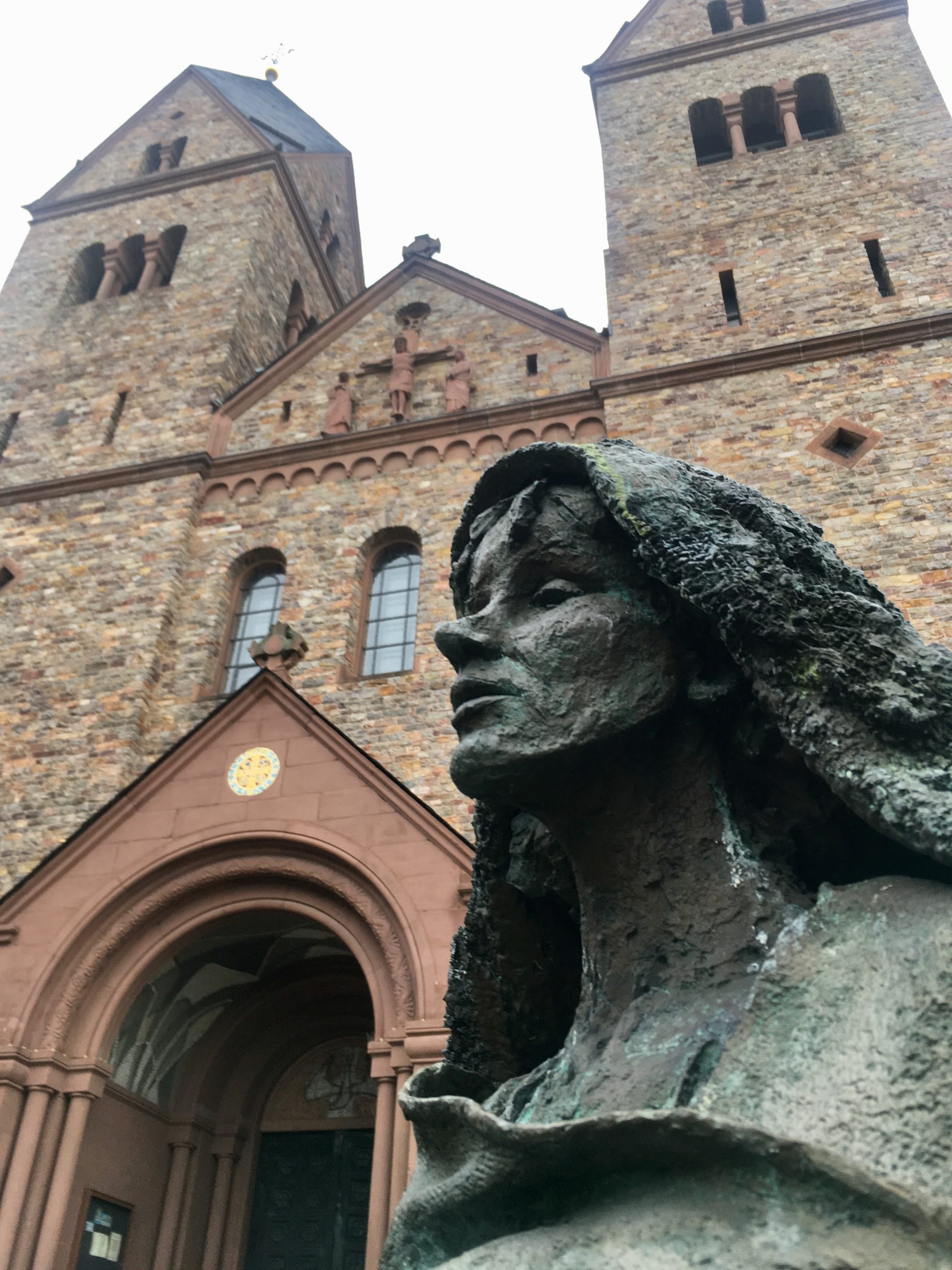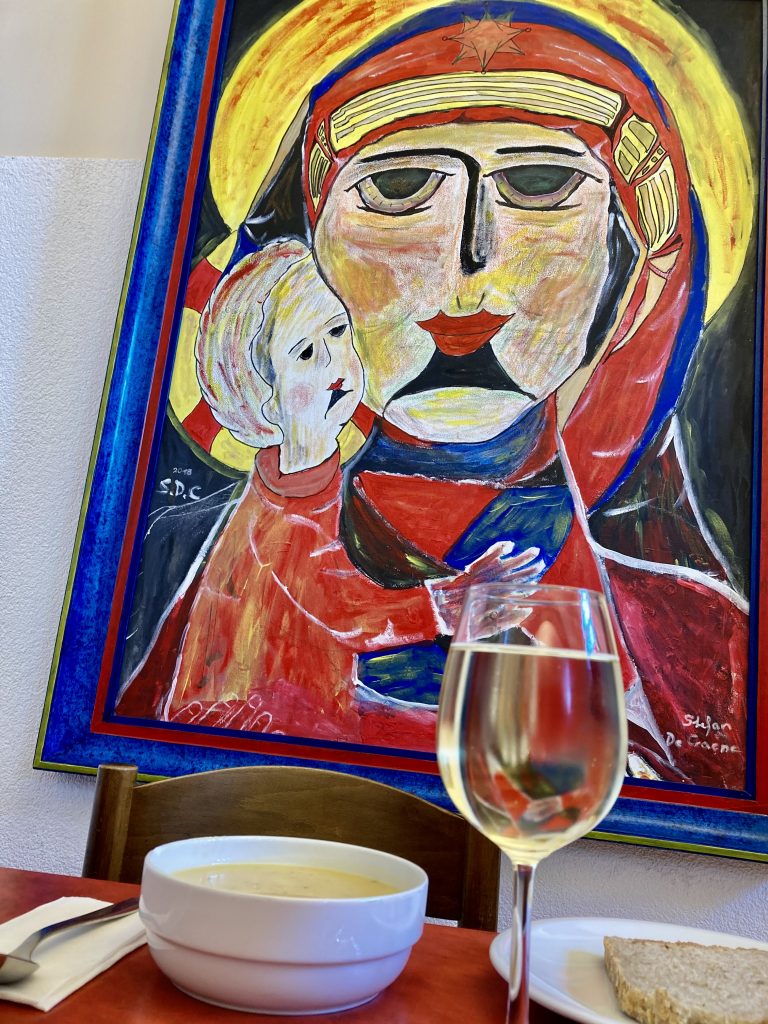Hildegard of Bingen, An Autumn Tincture

I don’t attend church. I’m not religious. But I’ve been chasing a 12th century nun around Germany.
A few years ago on a chilly October day I discovered Hildegard of Bingen, or at least an abbey and trail along the Rhine River bearing her name. I wasn’t particularly hungry, matter-of-fact I remember wishing I was. Entering the abbey’s cafe, I was greeted by the scent of earth tinged with sweetness. Chestnut soup. A nun ladled the homemade “soup of the day” into a bowl and placed it gingerly on a tray in front of me. I plucked a small bottle of Spätburgunder wine from a basket. I would discover later, the sisters tend and cultivate the vineyards on the property. I paid for my meal and shuffled on to a table under a painting of Mary and baby Jesus. I’m not one for the darkness religious art often carries, but the vibrant palette of colorful strokes made this piece feel alive, happy even.

The soup matched my mood in shades of muted gray and beige. It didn’t look particularly appealing, but it was served by a cheerful nun, so I ate. And I ate. I mopped up the puddles left with the slice of dinkel bread that appeared at my table. In between bites, I drank the garnet wine. For the first time since moving to Germany, I felt nourished. By what? I couldn’t say. It didn’t matter. I left the cafe with a sense of satisfaction and a lighter disposition. Before leaving the grounds I found myself in the abbey gift shop, a large light infused space filled with beautiful works created by the sisters: statues, paintings, pottery, and jewelry culminating into an abundance of color. As I made my way through the store I noticed packages of consumable Hildegard locally sourced remedies: lavender, fennel, hyssop, nettle, dinkel, galgant and dandelion. Moving along, there were dozens of books on Hildegard and a wine shop tucked into the back corner, where nuns poured tastings. All this made me more curious – who was Hildegard? Their book selection was abundant, but only one was in English, a small children’s picture book.
I took home two bottles of red wine, and the picture book. Since that cold fall day, I’ve returned to the abbey many times, read multiple books on Hildegard and spent time in a museum dedicated to her. I continue to be inspired and mesmerized by a woman many (outside of Germany) have never heard of.
What makes her special? Depending on where you search, the answer changes. Hidegard was canonized by the Catholic church on May 10, 2012, but I don’t believe the title “Saint” is her crown and glory. Poet, philosopher, prophet, abbess, polymath, and physician – these are the words that drew me into her realm. Add to her resume: composer, herbalist, healer, painter, and mystic and you’ve got a “Renaissance Man” that didn’t exist during the 12th century. Her varied interests and depth of knowledge continue to inspire nine centuries later. In 1979 when American artist, Judy Chicago created her famous installation, The Dinner Party, which celebrated monumental females throughout history, guess who has a place setting on the table? Hildegard of Bingen. She was the epic “Medieval Woman”.
While the Eibingen Abbey nuns did not relinquish their chestnut soup recipe, I’m happy to share the one I whipped up in my kitchen. I hope this hearty nourishing soup finds a seat at your table and brings comfort where it’s needed. This is Autumn’s bounty in a bowl ~
Click HERE to go to the soup recipe.
(This post and recipe have also been published in the November, 2021 issue of SHAPE Community Life Magazine.)